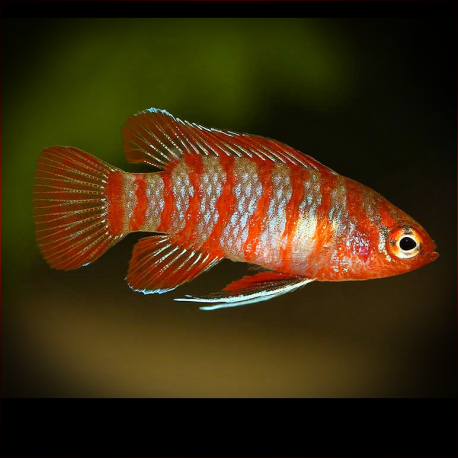More info
Datasheet
| Minimum Tank Size | 40 litres / 10.57 US gallons |
| Maximum Size | 3.5cm / 1.38inches |
| Temperature | 15°C / 59.00°F - 25°C / 77.00°F |
| Hardness | 1.01dgH / 18ppm - 5.04dgH / 90ppm |
| pH | 6.0-7.5 |
General Description
Dario dayingensis is a small fish species that has not yet been widely present in the ornamental fish trade. It can be distinguished from similar species by specific physical characteristics such as the number of scales, vertebrae, and tooth structure. Belonging to the Badidae family under the Perciformes order, this fish is part of the Dario genus, which includes miniature species that do not exceed 26 mm in standard length.
Aquarium Setup
The optimal tank setup for Dario dayingensis includes a structured layout with ample hiding spots. It thrives in a soft substrate and does well with plants like Cryptocoryne spp. or species that can attach to decorations such as Microsorum, Anubias, and Taxiphyllum. The inclusion of driftwood, floating plants, and leaf litter enhances the habitat. Water parameters should be maintained with a hardness of 18-90ppm, a pH range of 6.0-7.5, and a temperature between 15-25°C (see table).
Behaviour
This species is not gregarious and can display aggressive behavior among rival males, particularly in smaller tank setups. It is recommended to keep it solitary or in pairs, allowing each male enough space to establish a territory. Careful selection of tankmates is crucial, as Dario dayingensis is slow-moving and may struggle to compete with larger or more active fish for food. Peaceful cyprinids and diminutive loaches are suitable companions for this species.
Feeding and Diet
Micropredators, Dario dayingensis feeds on small aquatic crustaceans, worms, insect larvae, and zooplankton in its natural habitat. In captivity, they should be offered small live or frozen food such as Artemia nauplii, Daphnia, grindal, and micro-worms. Avoid feeding them chironomid larvae (bloodworm) and Tubifex, as this can lead to obesity and susceptibility to diseases.
Reproduction & Dimorphism
The reproductive behavior of Dario dayingensis involves substrate spawning and temporary pair bonding. Males become colorful with extended pelvic, dorsal, and anal fins as they mature, making them distinguishable from females, which are smaller and have a different body profile. During breeding, males establish territories, display courtship behavior, and invite females to spawn. Post-spawning, the male cares for the eggs, and fry require special attention and a diet of infusoria until they can consume larger food sources.
Habitat and Distribution
Found in the Irrawaddy River drainage in Yunnan Province, China, Dario dayingensis inhabits small, swift streams with rocky, sandy substrates and submerged riparian vegetation. It coexists with several other fish species and is typically observed in shallow waters with a depth of fewer than 30 cm. The distribution of this species extends to tributaries and neighboring counties, showcasing specific preferences for localized habitats.

